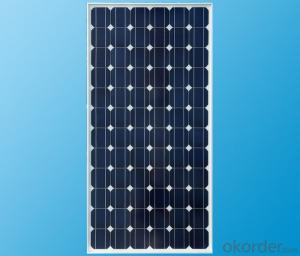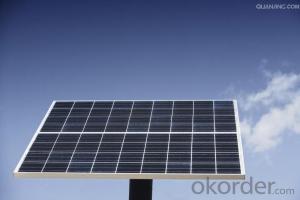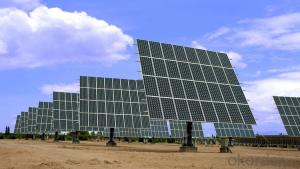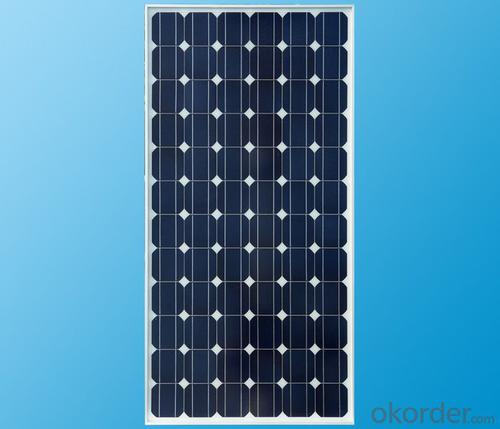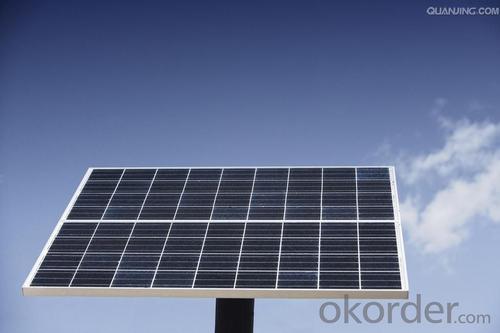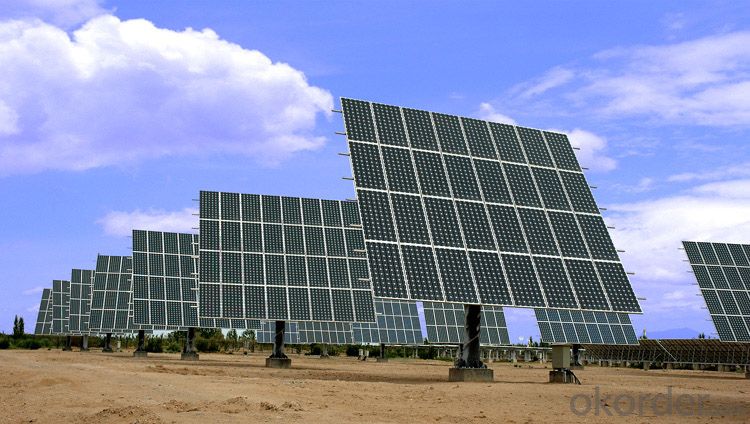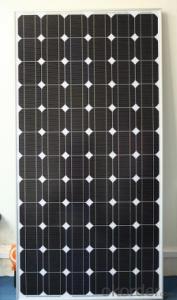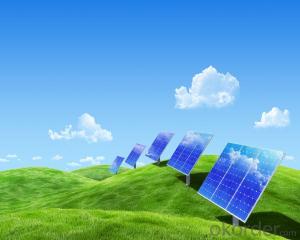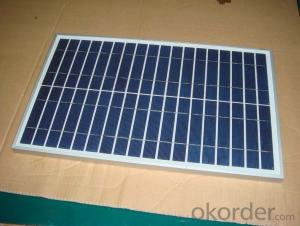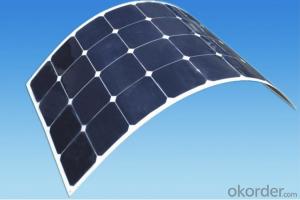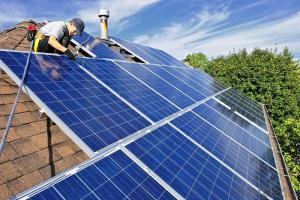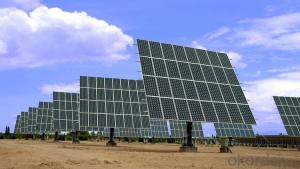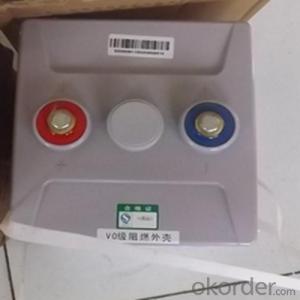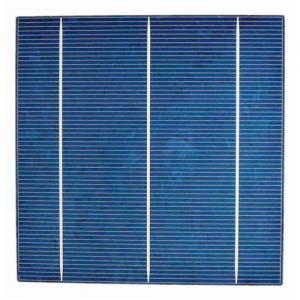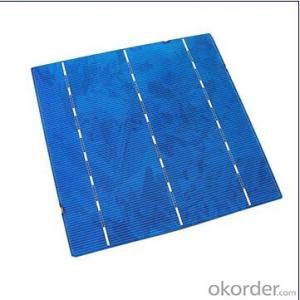Amorphous Silicon Solar Cells - Favorites Compare Best Price Power 100W 18V Solar Panel in Solar System
- Loading Port:
- China Main Port
- Payment Terms:
- TT OR LC
- Min Order Qty:
- -
- Supply Capability:
- 10000000000000 watt/month
OKorder Service Pledge
OKorder Financial Service
You Might Also Like
Quick Details
| Place of Origin: | Guangdong China (Mainland) | Brand Name: | CAP | Model Number: | 50w100w150w200w250w300w |
| Material: | Monocrystalline Silicon | Size: | 1385*1035*75mm | Number of Cells: | 72pcs |
| Max. Power: | 300w | type: | solar panel | color: | blue&black |
| warranty: | 5 years |
Packaging & Delivery
| Packaging Detail: | standard export package for solar panel |
| Delivery Detail: | 7-15 days for solar panel |
Specifications
solar panel
High Efficiency
25 years Warranty
High-transmissivity low-iron tempered glass
Solar Panel
50w100w150w200w250w300w
Characteristics
1,High and stable conversion efficienly based on over 4 years professional experience
2 ,High reliability with guaranteed +/-10% output power tolerance
3,Proven materials,tempered front glass,and a sturdy anodized aluminum frame allow modules to operate reliably in multiple mountily configurations
4,Combination of high efficicncy and attractive appearance
Quality and Safety
1,25 year 80%,10 year 90% power warranty 3 year power warranty
2,ISO9001:2000 (Quality Management system) certified factory
3,Product Quality warranty & products Liability Insurance to guarantee and user' benefits
4,Certifications TUV Intercert, CE Temperature Coefficients
| Module Type | 100w | 150w | 200w | 250w | 300w |
| Maximum Power at ST(Pmax)W | 100wp | 150wp | 200wp | 250wp | 300wp |
| Maximum Power Voltage(Vmp)V | 36/18 | 36/18 | 36/18 | 30.8v | 36/18 |
| Maximum Power Current(Imp)A | 2.77/5.55 | 4.16/8.33 | 5.55/11.1 | 8.11A | 8.33/16.66 |
| Open Circuit Voltage(Voc)V | 39.5/19.05 | 39.3/19.4 | 39.6/19.5 | 36.2V | 39.6/19.8 |
| Short Circuit Current(Isc)A | 3.04/6.09 | 4.58/9.16 | 6.1/12.2 | 8.7A | 9.16/18.33 |
| Cell Efficiency(%) | 18.60% | 18.10% | 18.60% | 17.80% | 18.10% |
| Module Efficiency(%) | 17.70% | 17.20% | 17.70% | 17.10% | 17.20% |
| Operating Temperature°C | -40°C to +85°C | -40°C to +85°C | -40°C to +85°C | -40°C to +85°C | -40°C to +85°C |
| Maximum system voltage | 1000V(IEC)DC | 1000V(IEC)DC | 1000V(IEC)DC | 1000V(IEC)DC | 1000V(IEC)DC |
| Power tolerance | -0.03 | -0.03 | -0.03 | -0.03 | -0.03 |
| Temperature coefficients of Pmax | -0.45%/°C | -0.45%/°C | -0.45%/°C | -0.45%/°C | -0.45%/°C |
| Temperature coefficients of Voc | -0.27%/°C | -0.27%/°C | -0.27%/°C | -0.27%/°C | -0.27%/°C |
| Temperature coefficients of Isc | 0.05%/°C | 0.05%/°C | 0.05%/°C | 0.05%/°C | 0.05%/°C |
| Weight(kg) | 8 | 11 | 14 | 20 | 25.5 |
| Number of cell(pcs) | 4*9 | 4*9 | 6*10 | 6*12 | 6*12 |
| Dimensions(mm) | 1194*534*35/30 | 1580*808*50/35 | 1471*670*40/35 | 1640*992*50 | 2000*1050*50 |
- Q: Are solar cells affected by pollution?
- Solar cells can be affected by pollution, particularly air pollution, as it can reduce the amount of sunlight that reaches the cells. This can result in a decrease in their efficiency and overall energy production. However, regular cleaning and maintenance can help mitigate the impact of pollution on solar cell performance.
- Q: Can solar cells be used for water desalination?
- Yes, solar cells can be used for water desalination. Solar-powered desalination systems harness the energy from sunlight to convert seawater or brackish water into fresh water. This process is known as solar desalination and involves using solar panels to generate electricity, which in turn powers the desalination system. Solar desalination offers a sustainable and environmentally-friendly solution to address water scarcity in regions with abundant sunlight.
- Q: What is the role of solar cells in powering streetlights?
- Solar cells play a crucial role in powering streetlights by converting sunlight into electrical energy, which is then used to illuminate the streetlights. They provide a sustainable and renewable source of power, reducing dependence on the electrical grid and minimizing carbon emissions. Moreover, solar cells enable streetlights to operate efficiently, even in remote or off-grid locations, making them an environmentally friendly and cost-effective solution for outdoor lighting.
- Q: Can solar cells be used on mobile devices?
- Yes, solar cells can be used on mobile devices. There are already various portable solar chargers available in the market that can be connected to mobile devices to generate and store energy from sunlight. Additionally, there are also some mobile devices that come with built-in solar panels to directly convert solar energy into power for charging.
- Q: Can solar cells be used to power remote weather stations?
- Yes, solar cells can be used to power remote weather stations. Solar cells can convert sunlight into electricity, providing a reliable and sustainable power source for remote locations where access to the electrical grid is limited or unavailable. This makes solar cells an ideal choice for powering weather stations in remote areas.
- Q: What is the lifespan of solar cell batteries?
- The lifespan of solar cell batteries can vary depending on various factors such as the quality of the battery, usage patterns, and maintenance. On average, solar cell batteries can last anywhere from 5 to 15 years. However, with proper care and regular maintenance, some batteries have been known to last for up to 20 years or more. It is important to consider the manufacturer's specifications and recommendations when determining the lifespan of a specific solar cell battery.
- Q: How do solar cells perform in high altitude locations?
- Solar cells generally perform better in high altitude locations compared to lower altitude areas. This is because higher altitudes often have less atmospheric interference, such as pollution and cloud cover, which can obstruct sunlight. Additionally, the thinner atmosphere at high altitudes allows for more direct and intense sunlight, resulting in increased solar energy generation. Overall, solar cells in high altitude locations can harness more sunlight and produce higher energy output.
- Q: What is the solar cell?
- When the surface of the solar cell and the electrode on the back side are connected with each other, a current flows.
- Q: How to manufacture solar cells?
- It's a bit difficult to describe.
- Q: Can solar cells be used on wearable technology?
- Yes, solar cells can be used on wearable technology. Advances in technology have made it possible to integrate small, flexible, and lightweight solar cells into wearable devices such as smartwatches, fitness trackers, and even clothing. These solar cells can convert sunlight into electricity, providing a sustainable and convenient way to power wearable technology.
Send your message to us
Amorphous Silicon Solar Cells - Favorites Compare Best Price Power 100W 18V Solar Panel in Solar System
- Loading Port:
- China Main Port
- Payment Terms:
- TT OR LC
- Min Order Qty:
- -
- Supply Capability:
- 10000000000000 watt/month
OKorder Service Pledge
OKorder Financial Service
Similar products
Hot products
Hot Searches
Related keywords
